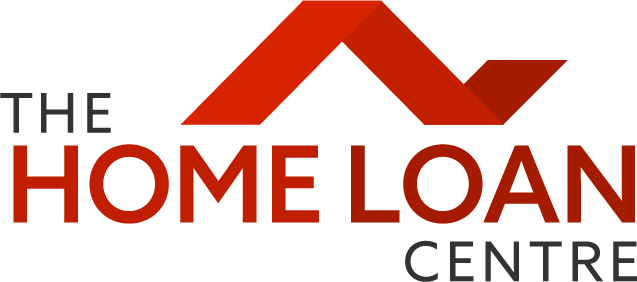
Types of Loans
Due to the complexities of the new regulations relating to the provision of loan comparison rate schedules we no longer advertise rates online. The Home Loan Centre strongly believes that interest rates alone do not provide adequate information to assess the optimum loan for its clients.
The loan features and structures our consultants will consider for you, in addition to the interest rate, are application, valuation and security fees, discharge and loan closure fees, ongoing account keeping fees, loan features and flexibility, such as portability, loan splits and ancillary benefits.
Click below to learn about the different loan types available in the market today:
A variable rate loan refers to the fact the interest rate is variable for the duration of the loan. This means the interest rate will move up and down, in accordance with economic conditions and market forces. The Reserve Bank of Australia’s monthly review of the official interest rate is the predominant benchmark which dictates interest rate movements.
Variable rate loans are the most popular form of home loan in Australia accounting for approximately 85% of all loans. The alternative loan is a fixed interest rate loan which is described below.
Variable rate loans have a number of advantages:
- You can increase the frequency or amount of your repayments at any time; this is often referred to as advance or unscheduled repayments. This means you can cut down the term of the loan and by making additional payments you will reduce the amount of interest charged.
- Many variable loan products will allow you to redraw the advance or unscheduled repayments, usually this service is available at no cost. The advantage of this feature is that it provides the borrower with greater flexibility at minimal cost.
- Variable loans give you complete flexibility so that you have the option to switch all or part of the loan to a fixed rate loan at any time. Some variable rate loans make specific allowance for the borrower to make the switch to a fixed rate loan without cost or at a minimal switching fee.
- Many variable rate loans allow the borrower to operate the loan as a “split” loan which means that part of the loan is set at the variable interest rate and part is at a fixed interest rate.
- Variable loans are usually portable. This means you can swap the security or mortgage on the loan, allowing you to transfer the loan to your new house if you move. The advantage of this feature is that the paperwork and cost of transferring your loan between properties is often lower than the alternative of repaying the original loan and establishing a new loan for the new property. In practical terms this feature has limited application as it is generally only effective where the new loan is the same or lower than the old loan, it also requires the two property settlements to occur simultaneously.
Variable rate loans are the most popular form of home loan in Australia accounting for approximately 85% of all loans. The alternative loan is a fixed interest rate loan which is described below.
Variable rate loans have a number of advantages:
- You can increase the frequency or amount of your repayments at any time; this is often referred to as advance or unscheduled repayments. This means you can cut down the term of the loan and by making additional payments you will reduce the amount of interest charged.
- Many variable loan products will allow you to redraw the advance or unscheduled repayments, usually this service is available at no cost. The advantage of this feature is that it provides the borrower with greater flexibility at minimal cost.
- Variable loans give you complete flexibility so that you have the option to switch all or part of the loan to a fixed rate loan at any time. Some variable rate loans make specific allowance for the borrower to make the switch to a fixed rate loan without cost or at a minimal switching fee.
- Many variable rate loans allow the borrower to operate the loan as a “split” loan which means that part of the loan is set at the variable interest rate and part is at a fixed interest rate.
- Variable loans are usually portable. This means you can swap the security or mortgage on the loan, allowing you to transfer the loan to your new house if you move. The advantage of this feature is that the paperwork and cost of transferring your loan between properties is often lower than the alternative of repaying the original loan and establishing a new loan for the new property. In practical terms this feature has limited application as it is generally only effective where the new loan is the same or lower than the old loan, it also requires the two property settlements to occur simultaneously.
A fixed rate loan is where the interest rate is fixed at a predetermined level for an agreed loan term. During the agreed term the interest will not change regardless of what happens to variable interest rates in the period.
The standard fixed terms offered by most lenders are 1,2,3,4, and 5 years. At the end of a fixed term borrowers normally revert to the lender’s standard variable rate. However, they can opt to apply to fix for another term. Fixed rates are usually offered on a choice of Principle and Interest, Interest Only, or Interest in Advance terms.
Fixed rate loans offer certainty but limit flexibility. Whilst they protect the borrower from interest rate rises they also limit additional or early repayments so that your repayments are predetermined and cannot be varied during the term without cost.
In recent years many lenders have introduced additional flexibility into their fixed rate contracts. These allow for additional payments usually up to a predetermined limit, which is most commonly $5,000 to $10,000 per annum.
Breaking a fixed rate prior to the end of the fixed term can be costly. Many lenders penalise you for economic loss and/or charge a prepayment fee. Every lender seems to have a different way of calculating break costs. It is wise to enquire before entering into a fixed rate loan.
The standard fixed terms offered by most lenders are 1,2,3,4, and 5 years. At the end of a fixed term borrowers normally revert to the lender’s standard variable rate. However, they can opt to apply to fix for another term. Fixed rates are usually offered on a choice of Principle and Interest, Interest Only, or Interest in Advance terms.
Fixed rate loans offer certainty but limit flexibility. Whilst they protect the borrower from interest rate rises they also limit additional or early repayments so that your repayments are predetermined and cannot be varied during the term without cost.
In recent years many lenders have introduced additional flexibility into their fixed rate contracts. These allow for additional payments usually up to a predetermined limit, which is most commonly $5,000 to $10,000 per annum.
Breaking a fixed rate prior to the end of the fixed term can be costly. Many lenders penalise you for economic loss and/or charge a prepayment fee. Every lender seems to have a different way of calculating break costs. It is wise to enquire before entering into a fixed rate loan.
Over the past decade many lenders have introduced “No Frills” or discount variable rate loans to complement their standard variable rate loans. The main difference between the products is the “No Frills” product generally has very limited features so it would not generally include things such as portability and loan splitting. All of the “No Frills“ products available from our lenders have the redraw, additional repayment and portability facilities.
Most lenders now offer a “professional” or “preferred” program where a borrower can pay an annual fee and have a variable rate loan with all the features of the standard product but subject to an interest rate discount that generally ranges between 0.50% and 0.70% per annum. Access to these products may also include a credit card as part of the package.
An offset account is a separate savings account run in conjunction with your home loan. With 100% offset accounts, the balance of the offset account is fully offset against the loan balance and interest is charged on the net balance of the two. The offset account will generally operate like a standard transaction account with cheque access, ATM cards, internet and phone banking. Often an offset account will have reduced or zero fees making it cost effective as a substitute to the traditional savings or cheque account.
An offset account is a separate savings account run in conjunction with your home loan. With 100% offset accounts, the balance of the offset account is fully offset against the loan balance and interest is charged on the net balance of the two. The offset account will generally operate like a standard transaction account with cheque access, ATM cards, internet and phone banking. Often an offset account will have reduced or zero fees making it cost effective as a substitute to the traditional savings or cheque account.
A line of credit allows you to draw down to a set limit as required, which means you only pay interest on the money you use. In essence a line of credit is similar to an overdraft. A disadvantage of lines of credit or equity facilities is that unless the borrower takes great care and is good at budgeting and money management, and has reasonable discipline, they can easily spend away the equity they have built up in their home.
Lines of credit don’t usually have a set term, they are on-going facilities and often they don’t require you to make a repayment unless the credit limit is exceeded (some lenders require that you at least meet the interest charged on a monthly basis). You can usually access up to 80% of the value of your home as an equity loan. Many investors use lines of credit facilities to purchase shares.
Lines of credit don’t usually have a set term, they are on-going facilities and often they don’t require you to make a repayment unless the credit limit is exceeded (some lenders require that you at least meet the interest charged on a monthly basis). You can usually access up to 80% of the value of your home as an equity loan. Many investors use lines of credit facilities to purchase shares.
Family Equity loans are a product which most lenders offer. In simple terms, this type of loan requires the applicant to engage the help of a family member who has equity in their residential property and is willing to guarantee the loan for the applicant.
The cost and requirements of these loans vary between lenders but usually, the family member(s) offer(s) a limited guarantee and supports the guarantee with a mortgage over some property. Generally the guarantee is limited to the amount by which the loan exceeds 80% of the borrower’s security value.
The cost and requirements of these loans vary between lenders but usually, the family member(s) offer(s) a limited guarantee and supports the guarantee with a mortgage over some property. Generally the guarantee is limited to the amount by which the loan exceeds 80% of the borrower’s security value.
These are variable interest rate loans that are interest-only during the construction period. They are drawn down progressively with payments paid direct to the Builder. Some lenders may charge additional fees during the construction period for additional inspections and valuations pre and post construction.

